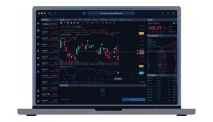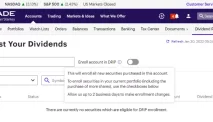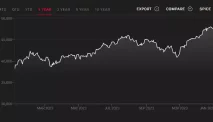Diksia.com - Are you looking for a way to boost your investment returns and diversify your portfolio? If so, you might want to consider investing in a mid cap growth index. A mid cap growth index is a type of stock market index that tracks the performance of medium-sized companies that have high growth potential.
In this article, you will learn what a mid cap growth index is, how it is constructed, and why it might be a good option for investors who want to benefit from the balance, resilience, and innovation of mid cap growth stocks. You will also learn how to invest in a mid cap growth index, whether through exchange-traded funds, mutual funds, or individual stocks.
By the end of this article, you will have a better understanding of the advantages and risks of investing in a mid cap growth index, and how to choose the best one for your goals and preferences.
What is a mid cap growth index?
A mid cap growth index is a type of stock market index that tracks the performance of companies with medium-sized market capitalizations (usually between $2 billion and $10 billion) that exhibit high growth potential. Growth stocks are typically characterized by above-average sales growth, earnings growth, and price momentum, as well as high price-to-book and price-to-earnings ratios.
A mid cap growth index is designed to capture the benefits of investing in mid cap stocks, which are often overlooked by investors who focus on either large cap or small cap stocks. Mid cap stocks tend to offer a balance between the stability and liquidity of large cap stocks and the innovation and growth potential of small cap stocks. Additionally, mid cap stocks tend to have less exposure to global macroeconomic factors and more exposure to domestic demand, which can make them more resilient during periods of market volatility.
A mid cap growth index is also designed to capture the benefits of investing in growth stocks, which are expected to generate higher returns than value stocks over the long term. Growth stocks tend to outperform value stocks when the economy is expanding, interest rates are low, and investor sentiment is optimistic. Growth stocks also tend to benefit from positive feedback loops, as their rising share prices attract more attention and capital, which in turn fuels further growth.
How is a mid cap growth index constructed?
There are different ways to construct a mid cap growth index, depending on the methodology and criteria used by the index provider. However, a common approach is to use a multi-factor analysis to classify mid cap stocks into growth and value segments, and then select the stocks with the highest growth scores to form the index.
For example, the Dow Jones U.S. Mid-Cap Growth Index1, one of the most widely followed mid cap growth indexes, uses three factors to measure growth: sales growth, the ratio of earnings change to price, and momentum. The index includes those Russell Midcap Index companies with relatively higher values for these factors. The index is completely reconstituted annually to ensure that it reflects the true mid cap growth market.
Another example is the Russell Midcap Growth Index2, which is part of the Russell Style Indexes, a comprehensive series of US style indexes that set the industry standard for measuring growth and value stocks. The index uses a multi-variable approach, using book-to-price, I/B/E/S forecast medium-term growth and historical sales per share growth to determine whether a company is part of the growth or value investment universe. The index is also reconstituted annually to ensure that it remains representative and practical.
Other examples of mid cap growth indexes include the S&P MidCap 400 Growth3, which is derived from the S&P MidCap 400 Index and uses three factors to measure growth: sales growth, earnings change to price, and momentum; and the CRSP US Mid Cap Growth Index4, which represents the growth style for companies covering 70% to 85% of cumulative capitalization of the CRSP US Total Market.
Why invest in a mid cap growth index?
Investing in a mid cap growth index can offer several advantages for investors who are seeking higher returns and diversification. Some of the reasons to invest in a mid cap growth index are:
- Higher returns: Mid cap growth stocks have historically delivered higher returns than large cap or small cap stocks, as well as value stocks, over the long term. According to Morningstar, the average annual return of the Dow Jones U.S. Mid-Cap Growth Index from 1996 to 2020 was 12.9%, compared to 10.8% for the S&P 500 Index, 9.9% for the Russell 2000 Index, and 10.4% for the Dow Jones U.S. Mid-Cap Value Index. Mid cap growth stocks tend to benefit from their ability to grow faster than large cap stocks, which are often constrained by their size and market saturation, and more sustainably than small cap stocks, which are often more risky and volatile.
- Diversification: Mid cap growth stocks can also provide diversification benefits for investors who want to reduce their portfolio risk and enhance their risk-adjusted returns. Mid cap growth stocks have a low correlation with other asset classes, such as bonds, commodities, and international stocks, which means that they tend to move independently of them. Mid cap growth stocks also have a moderate correlation with large cap and small cap stocks, which means that they can offer exposure to different market segments and economic cycles. By investing in a mid cap growth index, investors can gain access to a broad and diversified basket of mid cap growth stocks, which can reduce the impact of individual stock volatility and company-specific risks.
- Growth potential: Mid cap growth stocks can also offer growth potential for investors who are looking for companies that can capitalize on emerging trends, new technologies, and untapped markets. Mid cap growth stocks are often in the sweet spot of their industry life cycle, where they have established a competitive advantage and a loyal customer base, but still have room to expand and innovate. Mid cap growth stocks can also benefit from being more agile and adaptable than large cap stocks, which can enable them to respond faster to changing consumer preferences and market conditions. Mid cap growth stocks can also attract more attention and capital from institutional investors, analysts, and media, which can boost their visibility and valuation.
How to invest in a mid cap growth index?
There are different ways to invest in a mid cap growth index, depending on the investor’s preferences, goals, and risk tolerance. Some of the common ways to invest in a mid cap growth index are:
Exchange-traded funds (ETFs)
ETFs are funds that track the performance of an underlying index, such as a mid cap growth index, and trade on an exchange like stocks. ETFs offer a convenient, low-cost, and tax-efficient way to invest in a mid cap growth index, as they allow investors to buy and sell shares of the fund throughout the day, with minimal fees and commissions. ETFs also offer transparency, as they disclose their holdings and prices on a daily basis.
Some of the popular ETFs that track mid cap growth indexes are the iShares Russell Mid-Cap Growth ETF (IWP), which follows the Russell Midcap Growth Index; the SPDR S&P 400 Mid Cap Growth ETF (MDYG), which follows the S&P MidCap 400 Growth; and the Invesco S&P MidCap 400 Pure Growth ETF (RFG), which follows a subset of the S&P MidCap 400 Growth that exhibits the strongest growth characteristics.
Mutual funds
Mutual funds are pooled investment vehicles that invest in a portfolio of securities, such as mid cap growth stocks, and are managed by a professional fund manager. Mutual funds offer a more active and customized way to invest in a mid cap growth index, as they allow investors to benefit from the fund manager’s expertise, research, and analysis. Mutual funds also offer diversification, as they typically hold a large number of stocks across different sectors and industries.
However, mutual funds also have some drawbacks, such as higher fees and expenses, lower liquidity, and potential tax implications. Some of the well-known mutual funds that invest in mid cap growth stocks are the T. Rowe Price Mid-Cap Growth Fund (RPMGX), which seeks to provide long-term capital growth by investing in companies with strong growth prospects and competitive advantages; the Fidelity Mid Cap Growth Fund (FMAGX), which aims to achieve capital appreciation by investing in companies that have above-average growth potential and reasonable valuations; and the Vanguard Mid-Cap Growth Fund (VMGRX), which strives to provide long-term capital appreciation by investing in companies that are expected to grow faster than other mid-sized companies.
Individual stocks
Individual stocks are shares of ownership in a single company, such as a mid cap growth company. Individual stocks offer a more direct and selective way to invest in a mid cap growth index, as they allow investors to choose the specific companies that they believe have the best growth prospects and potential. Individual stocks also offer higher returns, as they can capture the full upside of a company’s performance and valuation.
However, individual stocks also have higher risks, as they are subject to the volatility and uncertainty of the market, as well as the company-specific factors that can affect its performance. Individual stocks also require more research, analysis, and monitoring, as well as a higher level of skill and experience. Some of the examples of mid cap growth stocks that are part of the Dow Jones U.S. Mid-Cap Growth Index are DocuSign (DOCU), a leading provider of cloud-based electronic signature solutions; Roku (ROKU), a pioneer and leader in streaming devices and platforms; and DexCom (DXCM), a leader in continuous glucose monitoring systems for diabetes management.
Conclusion
A mid cap growth index is a type of stock market index that tracks the performance of mid-sized companies that exhibit high growth potential. A mid cap growth index can offer several advantages for investors who are seeking higher returns and diversification, as well as exposure to emerging trends, new technologies, and untapped markets.
There are different ways to invest in a mid cap growth index, such as ETFs, mutual funds, and individual stocks, depending on the investor’s preferences, goals, and risk tolerance. Investing in a mid cap growth index can be a rewarding and profitable strategy, as long as the investor understands the risks and rewards involved, and conducts proper research and due diligence.






